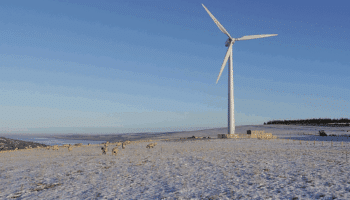- Energy
How do solar and wind change the electric grid?

Electric grids are not simple. Adding new power plants to the grid is nothing like plugging in a television or a lamp. The reality is far more complicated, and it can vary quite a lot from country to country or even within a country.
The complex nature of electric grids frequently turns them into the targets of online claims. A lot of these claims target renewables like solar and wind. Many commentators, particularly those who oppose renewable energy, claim that renewables make the electric grid less reliable – or that they’ll cause other problems.
It is true that electric grids are changing as the world tries to reduce its dependence on fossil fuels by adding more renewables and adopting new technologies like electric cars. Not only are our sources of power changing to include more solar panels and wind turbines, but so are the ways we use that power.
However, many of these issues have solutions. Let’s first look at how a traditional electric grid works. Then, we’ll look at how adding renewables changes the grid.
Main Takeaways:
- Electric grids are intricate feats of engineering. Grids must be carefully and continually maintained to stay operational.
- Traditionally, electricity was generated by large power plants, then transmitted and distributed to homes and businesses in a predictable manner.
- However, that is changing. Solar panels and wind turbines don’t always predictably create electricity. Solar and wind are also smaller and far more widespread than traditional power plants – some homes even have their own solar panels, for example.
- Furthermore, the rise of new technologies like electric vehicles means that the demand for electricity is becoming less predictable.
- Engineers have spent a great deal of thought finding solutions to these obstacles, and many of these solutions are already used on grids today. Grids are becoming more flexible.
How does electricity get to our homes?
On the surface, an electric grid seems quite straightforward:
- First, electricity must be generated – by fossil fuel power plants, nuclear reactors, hydroelectric dams, solar panels, wind turbines, or another source.
- Second, the generated electricity is transmitted from its sources to the places where people actually live and work. Long-distance cables carry electricity at high voltages of thousands of volts.
- Third, the electricity is distributed to the people who use it. Transformers reduce the electricity’s voltage from thousands of volts to hundreds. Local power lines finally bring the electricity to homes and businesses.
On closer inspection, electric grids are far more complex. There’s much more to a grid than electricity coming and going, and there’s a lot of effort placed into studying and monitoring grids.
For example, we usually talk about electricity taking a one-way path from the power plant to your house. This makes sense when we look at the big picture, but this isn’t actually how the physics of electrical grids works. The grid actually relies on what engineers call alternating current or AC – the direction of the current constantly switches back and forth.
How quickly the grid’s current changes is a measure known as the grid’s frequency. We measure frequency in hertz. Most of the world uses 50 hertz – meaning the direction switches back and forth 50 times in each second – but North America and some parts of Asia use 60 hertz (Figure 1).
That frequency must be kept as constant as possible. Think of the grid as following along to a metronome; the power system and all its generators must keep that metronome’s pace, else like a band falling off the beat, the grid may collapse. Even a deviation of 1 hertz can cause a collapse.
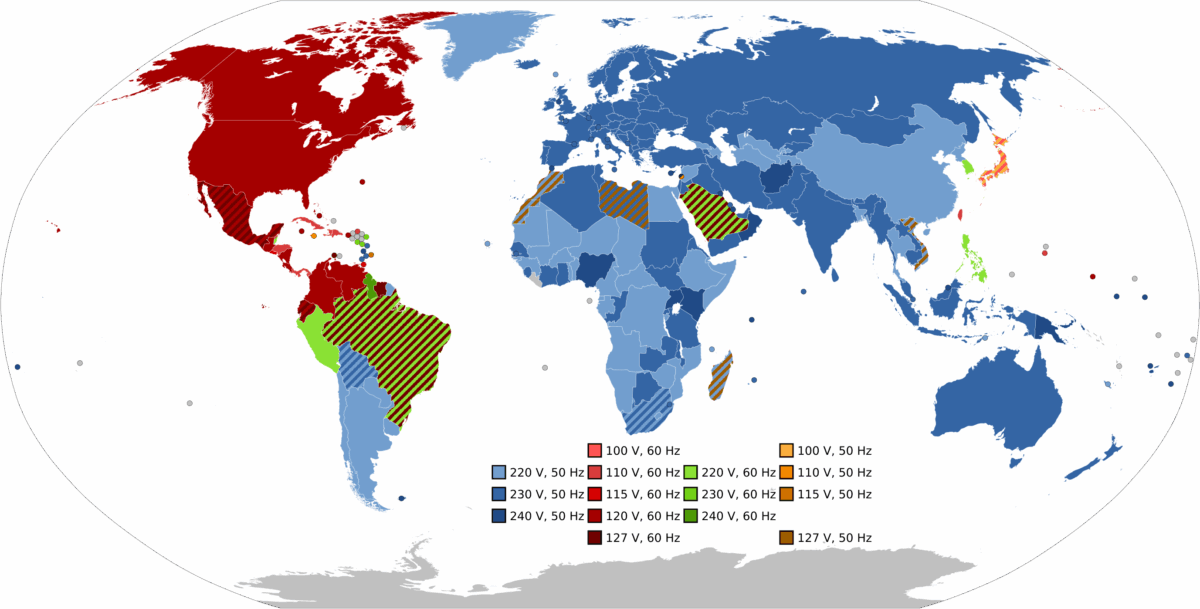
In addition to frequency, the grid has to ensure that its voltages stay stable. This isn’t just the voltage of the electricity that comes out of your wall – it also includes the much higher voltage of the lines that transmit power over long distances. A quirk of AC is that, any time you connect something to the grid, you create a reaction that changes the voltage. The grid must continually react to the reactions and keep voltage under control.
The grid uses specialized equipment to do all this while also ensuring that there’s enough electricity flowing through the grid to meet everyone’s demands. Already, you can see why grids are quite complex feats of engineering.
How do we know which power plants are active?
Making matters even more complex is the fact that the grid’s load – the electricity that people actually use – isn’t constant.
Demand for electricity rises and falls throughout the day, matching society’s usual rhythm of daily life (Figure 2). Demand is lowest at night, when most people are sleeping. It picks up in the morning, as people wake up for work or school and as businesses open for the day. It peaks as people return home, in the late afternoon and early evening, then begins to decrease as night falls.
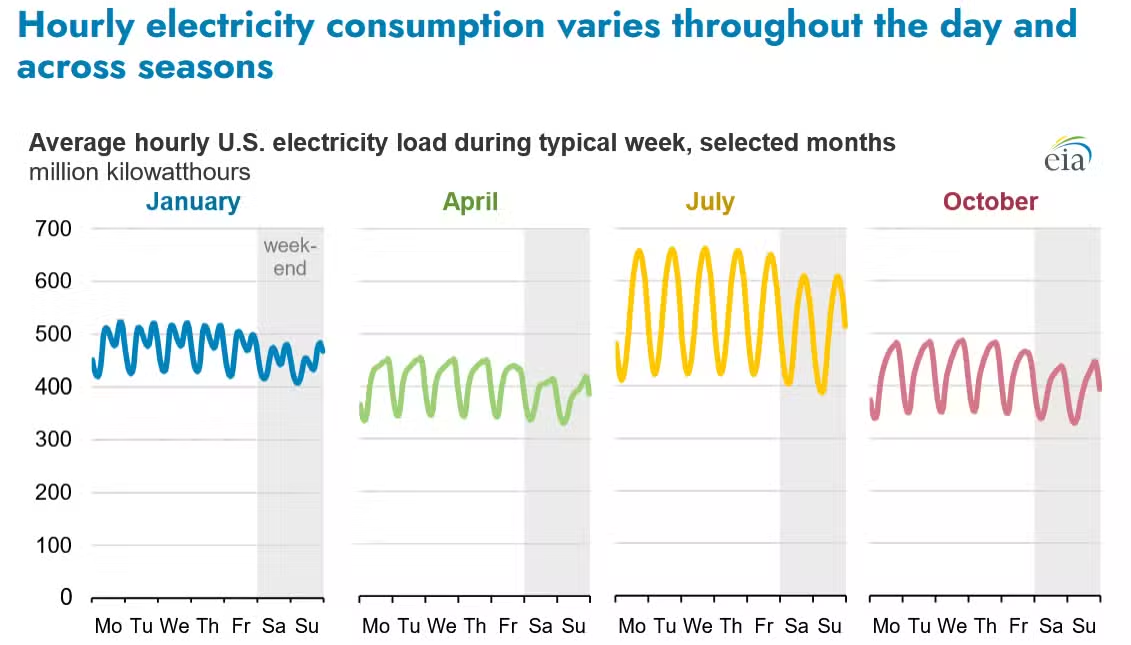
Furthermore, depending on where you are in the world, electricity use can rise and fall with the time of year. For example, in cooler climates, electricity use can spike in winter with demand for heating; in hot climates, electricity use can jump in summer as air conditioners are switched on – that’s why the U.S. uses the most electricity in July (see Figure 2).
Power plants generally don’t run 100% of the time – there’s no point in running generators to create electricity that will just go to waste. What grid operators do instead is predict how much electricity the grid will need. Then, they plan to bring enough generators online to match that need. Usually, they rely on something called merit order – they start with the cheapest sources, then work their way up the cost ladder until they have all the electricity they think they’ll need.
The resulting blend of electricity sources is called the electric mix.
You’ll notice, for example, that the British electricity mix changes throughout the year (Figure 3). You may assume that this is because solar power is less likely to generate electricity in the winter, but a far larger factor is simply that demand changes – Britons use more electricity during cold and dark winters.
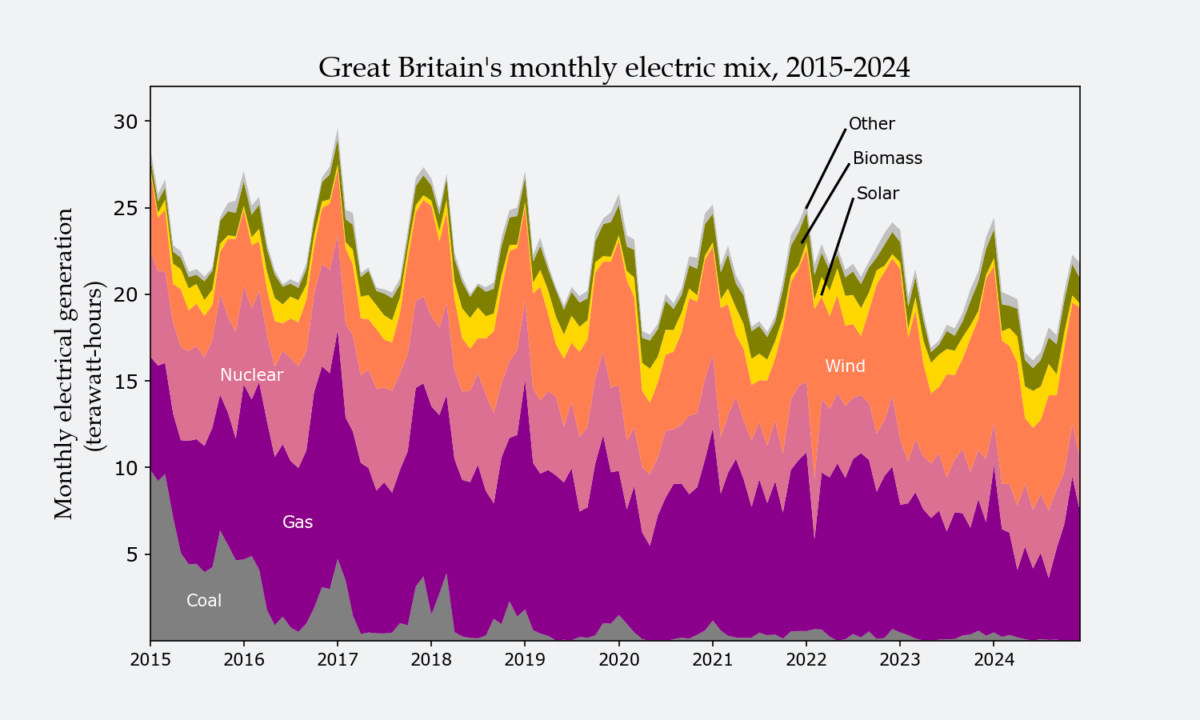
That’s why data on electric mix is often averaged over a year – it’s a better representation of what a country’s electric grid is actually like.
It’s also an example of why cherry-picking the electric mix at one point in time is often misleading. Some opponents of renewable energy may claim that, because renewables do not make up a significant part of the electric grid at one specific moment, then they are unreliable. This is misleading – as we’ve said, the grid is constantly in flux, and specific moments don’t represent anything.
Although demand rises and falls over time, the patterns of demand today fairly easy to predict. As Marko Aunedi, Senior Lecturer in Electronic and Electrical Engineering at Brunel University London, told Science Feedback:
“You can’t really shift, for example, the use of light. You need the light when it’s dark. You can’t shift your light demand when you’re sleeping or when it’s daytime.”
But the world isn’t unchanging, and new technologies bring new demands. We’re now living at a point where people are changing from powering their vehicles on fuel to powering their vehicles from the grid. A 2018 study predicted that electric vehicles could make up 13 to 26% of all U.S. electricity demand by 2050[1].
Many colder countries are trying to switch from heating with natural gas to heating with electric heat pumps. For instance, a 2023 study found that, if the vast majority of UK homes used heat pumps, the UK’s winter electricity demand would increase by 100%[2]. A 2021 study found that widespread takeup of heat pumps in warmer Texas would increase peak winter demand by 36%[3].
Things like electric lights and kitchen appliances are generally operated at fixed times. Electric vehicles and heat pumps, on the other hand, are far less predictable – they might be plugged in or turned on at any time of day or night. So, future grids will need to adapt to these changes and ensure that there’s always a reliable supply of electricity.
Already, some utilities offer cheaper electricity at off-peak hours, encouraging people to use their household appliances – or charge their electric vehicles – at times when demand is lower. But there are engineering solutions as well, and engineers have spent a lot of effort figuring out how to achieve this with renewables.
How are solar panels and wind turbines connected to the grid?
Solar and wind have key advantages over fossil-fuel-fired power plants. Most obviously, solar panels and wind turbines emit far less greenhouse gas over their lifetimes. Solar panels and wind turbines are also cheap to build, and have plummeted in cost in recent years; this is why the world is adding record amounts of renewable energy, with even more on the way.
Their key disadvantage, however, is that solar and wind are intermittent – they only work when weather permits.
There are many claims that intermittency makes solar and wind unreliable. While intermittency is a problem, the reality is that engineers have been aware of this problem for decades, and numerous solutions to the problem now exist – engineers call this ‘firming up’ renewables.
The most obvious solution is to simply include solar and wind as a major part of a grid alongside other sources. The more diverse your electric grid is, the more flexibility it has.
Another solution is to add batteries to the grid. Batteries help make the grid more flexible, as Aunedi told Science Feedback:
“You can use your batteries to help you absorb excess power around noon, and then you can use that power in other times of the day when your PV [solar power] is not producing. You can also use batteries to help you supply peak demand, so you might be able to avoid having to invest in peak generation.“
Battery storage on the grid is no longer a distant future concept. The world had already installed around 150 gigawatts of battery capacity by the end of 2024, according to the pro-renewables organization REN21 – for comparison, that’s actually more than the total grid capacities of many small countries. Nearly half of that capacity was installed in 2024 alone. Many observers expect battery numbers to rapidly grow.
There are other ways of storing electricity on the grid. The most common is called pumped-storage hydropower; it’s been used for many decades, long before the current push for renewable energy. A pumped-storage hydropower system consists of a dam between two reservoirs. When other electric sources are running, the dam pumps water from the lower reservoir to the upper reservoir; when electricity is needed, water is let through the dam to spin its generators.
Other methods can control the grid’s frequency
Intermittency is one way that solar and wind are different from traditional power plants, but it’s not the only way. Whereas electricity in a fossil-fuel- or nuclear-dependent grid tends to come from a smaller number of major power plants, electricity in a solar- or wind-dependent grid comes from a far larger number of small sources.
Solar and wind electricity can also be generated far closer to its users. You probably can’t run a coal generator or a nuclear reactor in your house, but you can install solar panels on your rooftop, and if those are generating more than the building needs, it can feed power back into the grid.
This completely changes the picture of electricity coming from the generator to the customer. Ahmed F. Zobaa, Reader in Electrical and Power Engineering at Brunel University London, told Science Feedback:
“In the traditional grid, the generation or the power has a unidirectional flow – from upstream to downstream, from the generation to the load. Now, while adding renewables, you start to see bidirectional flow of power, from upstream to downstream and vice versa.”
You may sometimes see claims that wind turbines and solar panels don’t provide a stable voltage and frequency, but this isn’t really a problem, as Aunedi told Science Feedback:
“we have the techniques which can be added to convert the variable voltage and frequency of these renewable energy sources into fixed voltage and frequency to be matched with the national grid frequency and voltage.”
Engineers already take care of this when they add renewables to the grid. Modern grids typically have so-called ‘grid codes’ that lay out the rules for connecting new power sources, and those rules often include frequency and voltage control devices. Giving an example of this, Zobaa told Science Feedback: “You’re an owner of a wind farm coming to me as the national grid, asking me, ‘I need to connect to your grid’. Okay, meet the requirement in the grid code.”
On a larger scale, as we discussed earlier, the grid needs to keep frequency. Large power plants can do this because they rely on large generators; as the generators continually rotate, they keep the grid’s beat. Multiple large generators working provide what electrical engineers call inertia – that is, even if one falls away, others on the grid can keep the beat. However, smaller wind turbines and solar panels don’t have this capacity.
Fortunately, there are solutions. You could run conventional generators in tandem with your solar and wind, for example. These don’t have to use fossil fuels; they could also use nuclear, hydro or biofuels. Even without other generators, you could use equipment like flywheels that mimic the spinning of a conventional generator to keep frequency. Battery systems can also provide inertia[4].
How does electricity flow between countries?
There’s another, well-established way to bolster your grid – bring electricity from elsewhere.
In many places around the world, grids are linked together (see Figure 4 below). Here, local grid operators still control their own power generation. However, they have the option of activating connections to neighboring countries when needed. Thus, when a country is generating more electricity than demand, it can export it; when a country needs more electricity, it can import it.
For example, most of continental Europe is linked together as a single 50-hertz synchronous grid. It’s a daily occurrence for European countries to share their electricity with their neighbors, or to use their neighbors’ electricity to shore up the gap.
Combining neighboring electric grids is not a simple task. The grids and their frequencies must all be in sync. Returning to the metronome analogy, imagine trying to combine two bands playing the same song. You may have recently seen the news that Lithuania, Latvia, and Estonia linked their national electric grids to the Europe-wide grid. This was a significant engineering effort.
Synchronous grids allow countries to support high percentages of solar and wind. More than two-thirds of Denmark’s electricity in 2024 came from intermittent renewables, mostly wind. Denmark’s success in this regard is partly attributed to Denmark’s connections with other countries, which allow it to import electricity in a pinch or export it when its wind turbines are generating more than required.
Synchronous grids help provide electricity in emergencies. This is why, when Spain’s grid suffered a blackout earlier this year, one of the first actions that grid operators took was to reactivate connections with France, allowing them to bring in electricity from a still-operating grid.
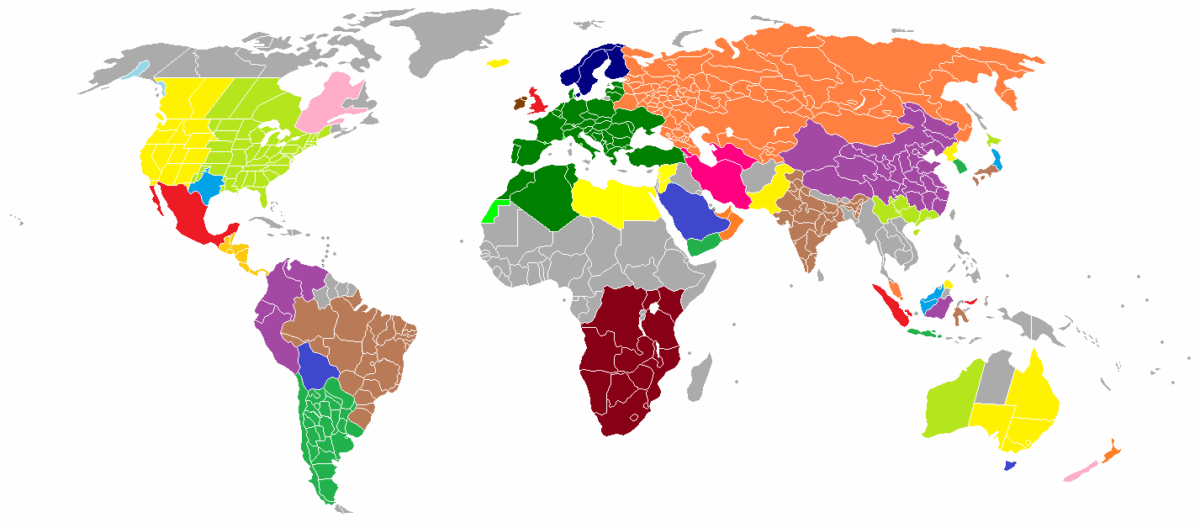
Different synchronous grids can still be connected – this relies on special cables called interconnectors that move DC at high-voltages. Either end of the direct current cable will contain equipment that converts the DC to the respective grid’s AC and vice versa.
For example, although the isles of Great Britain and Ireland each have their own separate grids distinct from continental Europe, they’re connected to both each other and other grids by interconnectors. Some of the world’s longest interconnectors link Great Britain across the North Sea with Norway and Denmark.
These sorts of interconnects give grids more flexibility. Take Texas, for example, which for historic political reasons has its own grid distinct from the rest of North America. Texas does not even have interconnectors to its neighbors. When Texas experienced a nightmarish winter storm in 2021, the grid suffered a blackout. Some experts believe that, had Texas been able to draw power from its neighbors, the blackout could have been avoided or at least alleviated.
Conclusion
Electric grids are often targets of misinformation. It’s easy to understand why – as you can see, electric grids are intricate, complex systems with countless moving parts that must all operate in sync in order for electricity to reach your home.
However, many of the issues that are often raised – such as renewables’ intermittency – are issues that engineers have spent decades working on and creating solutions for.
There are numerous reasons that many people want to add more renewables to their respective energy grids – beyond economic reasons, one is that renewables will reduce our reliance on the fossil fuels that cause climate change[5]. Doing so means needing to adjust how the grid works. This doesn’t mean that renewables don’t work – it simply means that engineering challenges must be overcome.
References
- 1 – Fox-Penner et al. (2018) Long-term U.S transportation electricity use considering the effect of autonomous-vehicles: Estimates & policy observations. Energy Policy.
- 2 – Watson et al. (2023) Predicting future GB heat pump electricity demand. Energy and Buildings.
- 3 – White et al. (2021) Quantifying the impact of residential space heating electrification on the Texas electric grid. Applied Energy.
- 4 – Curto et al. (2022) Grid Stability Improvement Using Synthetic Inertia by Battery Energy Storage Systems in Small Islands. Energy.
- 5 – IPCC. (2022) Climate Change 2022: Impacts, Adaptation and Vulnerability.


